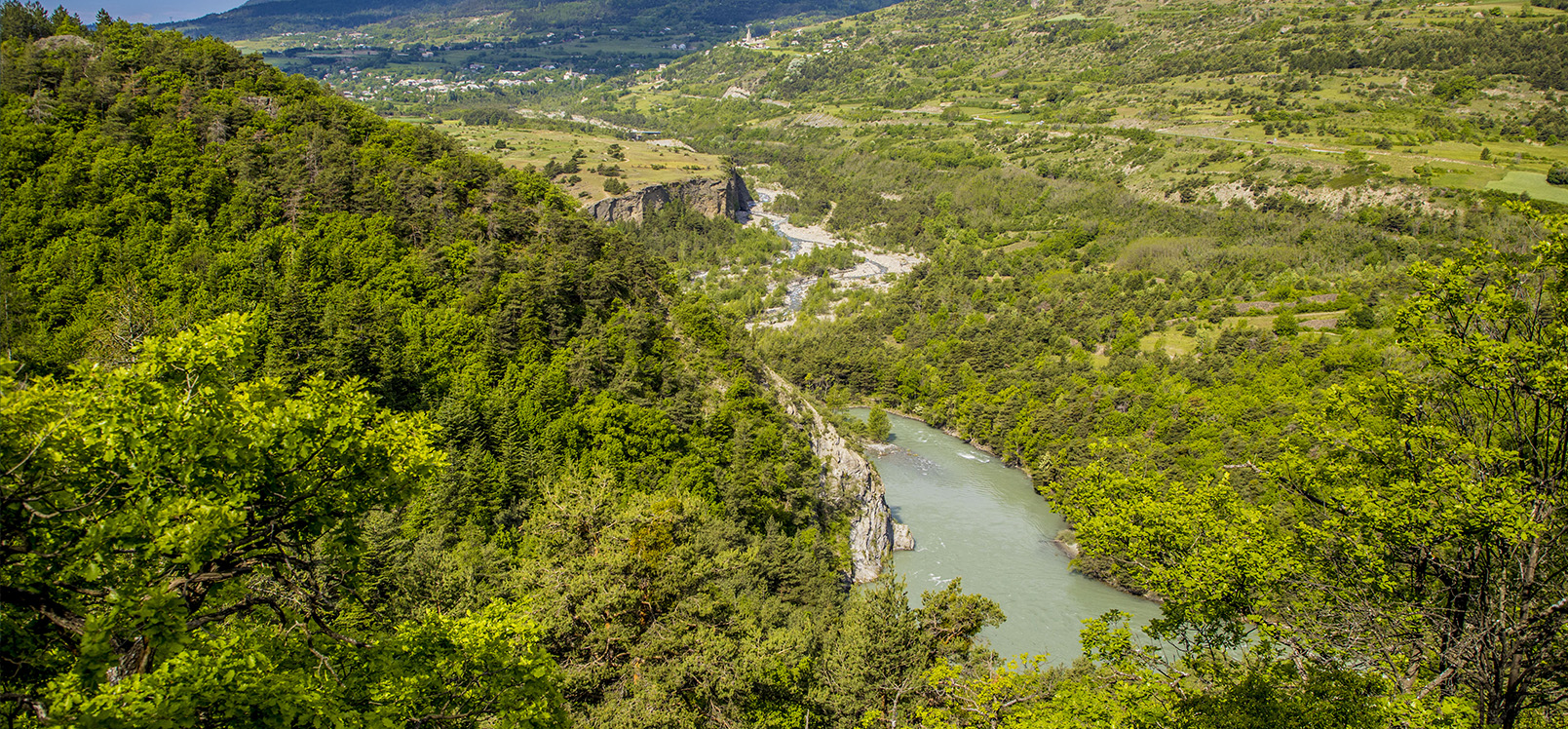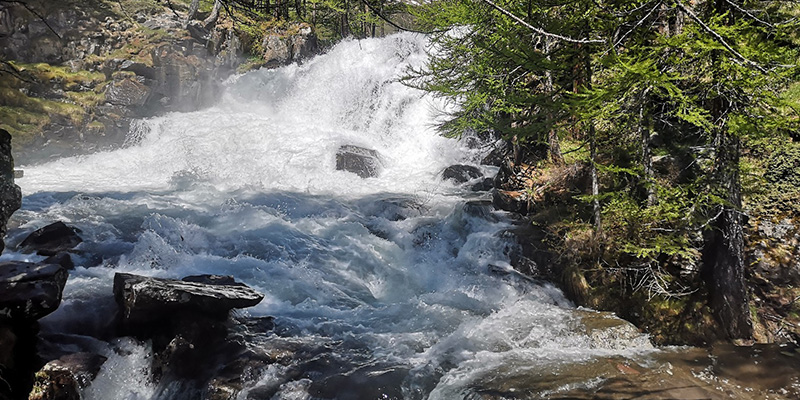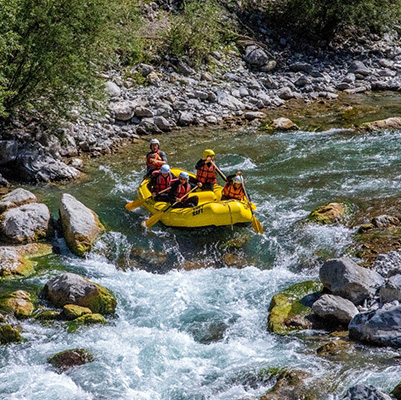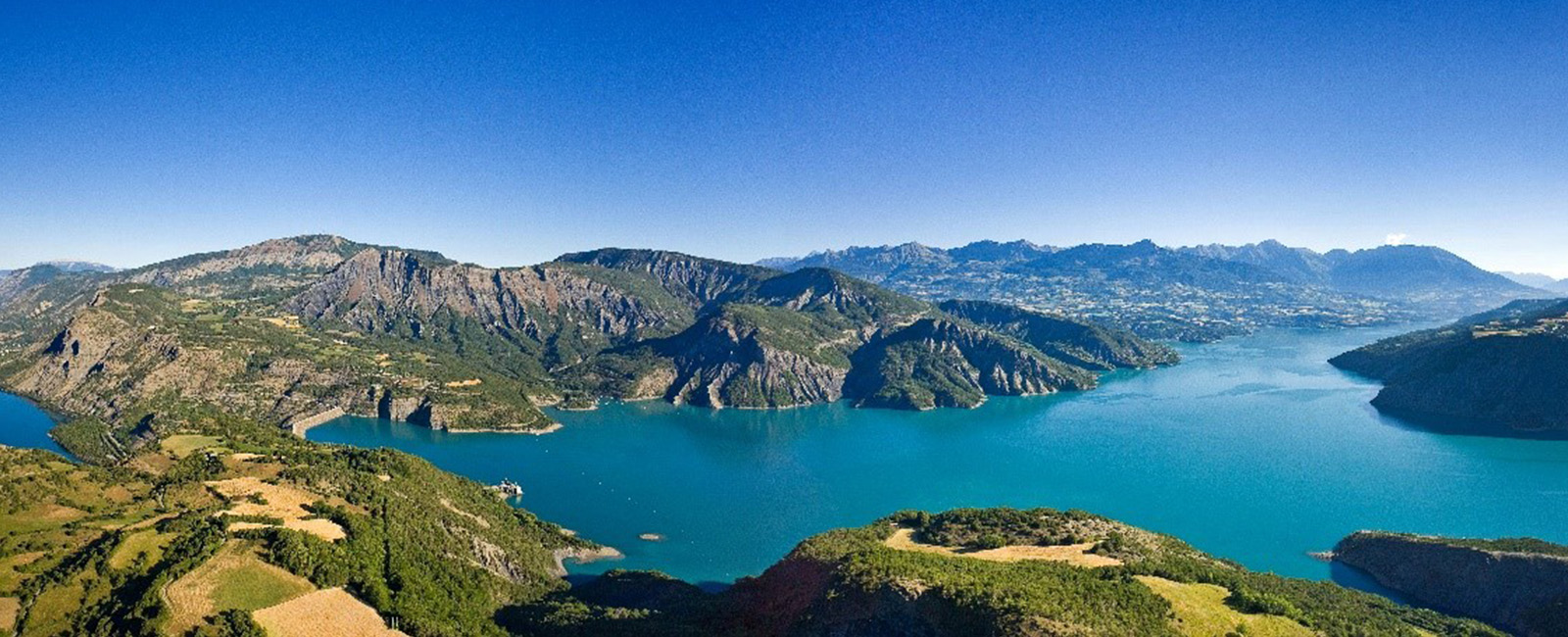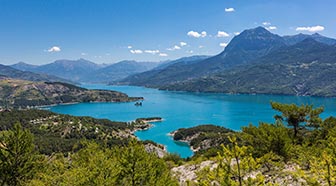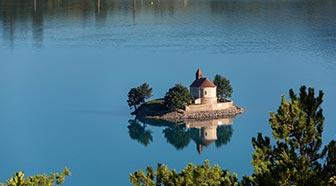THE MOUNTAIN & LOWLAND RIVERS OF HAUTES-ALPES
Hautes-Alpes is a whitewater eldorado. It is here, in these stunning surroundings, that the whitewater sports in France took off. This is the home of some of the most famous whitewater destinations in the world, the biggest events and the most accomplished champions. It is also here that anyone can try this sporting discipline for the first time – in a part of France almost untouched by development.
The Durance
This river once flowed all the way to the sea but 350,000 years ago its course changed. In 1960 the river was tamed when the Serre-Ponçon dam was built, but it remains very much a mountain river by nature. The flooding of the valley to create Lac de Serre-Ponçon was the subject of Jean Giono's 1958 film Girl and the River. The headwaters of the Durance gather on the France-Italy border, from where it follows its course from dyke to dam for almost 320 km to Provence, taking on a new character with each changing landscape. Legend has it that even Hannibal and his elephants were afraid to cross its swift-flowing waters. In past centuries the river was indeed much feared, subject as it was to terrible flooding that would on occasion wipe entire villages off the map. Today it is however a great source of life, generating energy, providing drinking water, irrigating the land and attracting tourists in large numbers. When it comes to water sports, the Durance is navigable all year round, making its way through the beautiful countryside of the open valley is has carved out. Its two tributaries in the Écrins region, the Rivers Gyre and Onde, are also navigable.
The Guil
Historically, navigating the River Guil was the easiest way to travel from Provence to Piedmont and the former kingdom of Savoy. Its source lies high up in the Mont Viso Cirque, from where fast-flowing streams tumble down the mountainside to form a torrent that descends the valley of the same name before flowing into the River Durance (itself a tributary of the Rhône) at 880 metres, below the slopes of Mont Dauphin. The river has carved a deep passage through the rock, creating two incredible gorges known as ‘les combes’. The first of these forms a natural moat around the medieval castle of Château-Queyras. It looks impressive but is not overly challenging, although swimming the gorge is definitely not recommended. The second gorge, known as the ‘Guardian Angel’, is less scary looking but more technically challenging – a series of steep rapids deceptively tricky to negotiate. Further downstream, the Guil follows the road to La Maison du Roy Dam.
The Drac and Séveraisse
Formed by the meeting of the Drac Blanc and Drac Noir, the River Drac flows through the Champsaur Valley to the Valgaudemar, where it is fed by the waters of the River Séveraisse before heading north to Grenoble. This river is popular with rafters and kayakers because its regular flow creates lots of lovely wave trains that the spring meltwater turns into rollers. The river has a nivo-pluvial regime influenced by the clash between the Mediterranean and Atlantic regimes, flowing as it does through the transition zone between the Southern and Northern Alps. Its grade can change very quickly depending on the volume of water, with falls during periods of drought, particularly along the middle section of the Champsaur Valley where the river splits into several arms as it flows over the gravelly ground upstream of the village of Saint-Bonnet. It was along this fertile farming valley that Napoleon I passed in 1815 on his return from exile on the Island of Elba. In the 20th century, the Route Napoléon, running from Golfe-Juan to Grenoble, was created to mark his historic journey.
The Guisane
In the Briançonnais region, the River Guisane flows through the Serre Chevalier-Briançon Valley for some 20 kilometres from its source near the Col du Lautaret to Briançon, where it joins the River Durance. Along the way, the Guisane runs its gentle course between the Route des Grandes Alpes tourism route and the ski slopes of Serre Chevalier en Ubac. Here, there are no rugged gorges or fast-flowing rapids to attract whitewater sports fanatics, just a little Alpine river ripe for exploring, its cool waters inviting you for a refreshing dip, especially between April and July/August. Several sections are navigable: Le Casset to Monêtier-les-Bains (2.5 km at a gradient of 1.5%), Monêtier-les-Bains to Saint-Chaffrey/Chantemerle (8 km, 1.7%) and Saint-Chaffrey/Chantemerle to Briançon (7 km, 2.1%).
The Clarée
This little river runs through meadowland, making it the perfect candidate for a riverside picnic in the spring and summer. It’s a lovely high-altitude watercourse that runs down from the peaks and pastures of Névache to just upstream of Briançon. As rivers go, the Clarée is one of the most captivating in the Alps, abundantly stocked with fish. Fast-flowing and very cold near the headwaters, it then runs through the Névache Plateau before broadening and winding its somewhat eccentric way to the River Durance, four kilometres short of Briançon. The Clarée has something to please both gentle river ramblers and whitewater enthusiasts since the upper section is quite technically challenging but the lower part – Névache to Plampinet (4.5 km at 1.7%) and Plampinet to La Vachette (12 km at 1%) – is much more easy going. Following the river is a great way to take in the valley’s natural and architectural heritage: traditional chalets, forests, Alpine pastures, sundials, churches and chapels, mountain huts, and not forgetting the Fontcouverte Waterfalls above the village of Névache.
Other rivers in Hautes-Alpes
The Gyronde, Romanche, Büech, Méouge and Drac.
Spotlight: the miraculous water at Monêtier-les-Bains
After a day out in the fresh air, what better way is there to recharge your batteries than at the spa? In the Serre Chevalier Valley, Les Grands Bains spa in Monêtier-les-Bains is an oasis of calm, indulgence and relaxation in eco-friendly surroundings of wood and stone where you can lie back in the water and drink in the views of the stunning countryside all around. The hot water that bubbles out of the ground here at 37 °C was found by the Romans to have healing powers. In times past, this gift from nature was used for its beneficial gastric, rheumatological and dermatological properties.
Today, the beneficial spa waters of Monêtier-les-Bains feed the Les Grands Bains spa. The complex boasts a recreational spa of 4,500 m2 with indoor and outdoor pools (each 300 m²), a water current, parabolic water jets, water blades, swan necks, an underwater counter current, a jacuzzi, bubble beds, a steam bath, a music grotto, and a Roman-style bathhouse (Caldarium, Tepidarium and Frigidarium). All with amazing views of the mountains of the Briançonnais while you relax.
